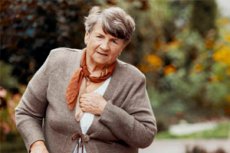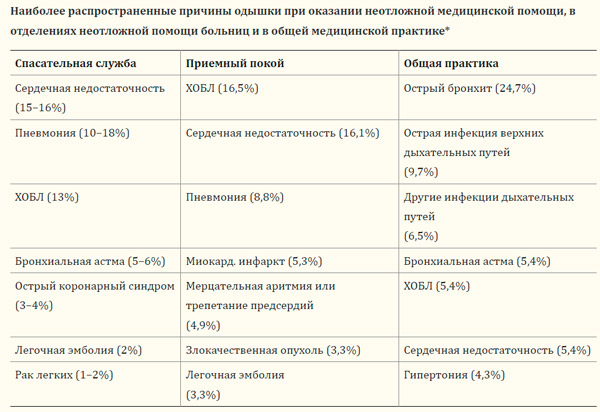Medical expert of the article
New publications
Shortness of breath when walking
Last reviewed: 29.06.2025

All iLive content is medically reviewed or fact checked to ensure as much factual accuracy as possible.
We have strict sourcing guidelines and only link to reputable media sites, academic research institutions and, whenever possible, medically peer reviewed studies. Note that the numbers in parentheses ([1], [2], etc.) are clickable links to these studies.
If you feel that any of our content is inaccurate, out-of-date, or otherwise questionable, please select it and press Ctrl + Enter.

While shortness of breath is considered normal during heavy physical activity, in the case of minimal exertion, a feeling of shortness of breath with breathing that requires more effort - that is, shortness of breath when walking - is a common symptom of respiratory or cardiovascular disease.
In a consensus document [1], the American Thoracic Society defines dyspnea as "a subjective sensation of discomfort in breathing consisting of qualitatively distinct sensations varying in intensity.... [it] results from the interaction of multiple physiologic, psychological, social, and environmental factors and may elicit secondary physiologic and behavioral responses."
Causes of the shortness of breath
Dyspnea or dyspnea can be acute (lasting from a few hours to a few days) or chronic (lasting more than 4-8 weeks). Often, walking can cause shortness of breath in the presence of certain diseases of two major systems: the respiratory system and the cardiovascular system.
Respiratory system-related causes include:
- Leading to decreased airway patency b rhonchial asthma;
- Lung infection in the form of bronchitis (most often obstructive or obliterative) or pneumonia with pleural effusion;
- Affecting the bronchioles of the lungs chronic obstructive bronchiolitis;
- Exacerbation chronic obstructive pulmonary disease (COPD); [2]
- Pulmonary embolism, which carries blood from the heart to the lungs; [3]
- Pulmonary emphysema with alteration of their alveoli;
- Interstitial lung diseases with decreased elasticity of their tissue, including, idiopathic fibrosing alveolitis and pneumosclerosis; occupational diseases - asbestosis, silicosis, anthracosis; autoimmune - bronchopulmonary sarcoidosis and amyloidosis; [4]
- Atelectasis of the lung;
- Malignant neoplasms or metastases in the lungs;
- Pneumothorax;
- Pneumonia. [5]
Among the cardiovascular causes of walking dyspnea are noted:
- Chronic congestive heart failure; [6]
- Myocardial ischemia; [7]
- Effusion and constrictive pericarditis;
- Persistent increase in pulmonary artery pressure - pulmonary hypertension;
- Heart defects. [8]
In many cases, shortness of breath when walking in the elderly is one of the symptoms heart failure in the elderly.

There may be shortness of breath when walking in pregnancy, particularly in the last trimester. And in pregnant women who do not have problems with the respiratory or cardiovascular system, such shortness of breath is due to physiological reasons: an increase in the volume of circulating blood, pressure of the uterus on the diaphragm, and the action of the hormone progesterone, which relaxes the transverse striated muscles, including the inspiratory (respiratory) muscles. [9]
See also - causes of shortness of breath
Risk factors
The risk of developing shortness of breath while walking is increased when:
- Anemia;
- Smoking;
- Respiratory infections;
- Lung or heart problems;
- Sensitization of the body with a tendency to allergic reactions;
- Lung lesions caused by inhalation of toxic substances, as well as prolonged inhalation of industrial dust (coal, asbestos, graphite and containing free silicon dioxide), which can cause pneumoconiosis;
- Drug-induced lung lesions;
- Obesity (which puts additional strain on the respiratory and cardiovascular system).
Pathogenesis
Dyspnea during walking and exercise develops as a result of multiple interactions of afferent and efferent signals with central nervous system receptors, peripheral (carotid and aortic) chemoreceptors, and mechanoreceptors that are located in the airways, lungs, and pulmonary vessels.
Chemoreceptors control the partial pressure of oxygen in arterial blood and the level of carbon dioxide, and mechanoreceptors transmit sensory information about the volume of lung space to the respiratory centers of the brain.
Any physical exertion increases the metabolic demand for oxygen. Afferent signals going to the CNS carry information about blood gas levels and disturbance of gas exchange with an increase in CO2 content. And efferent signals are downward signals from the respiratory center of motor neurons that activate respiratory muscles: diaphragmatic, external intercostal, ladder and sternoclavicular-papillary muscles.
And the pathogenesis of dyspnea arising during walking is explained by the fact that the respiratory centers of the brain, responsible for the formation of the basic respiratory rhythm (contraction / relaxation of respiratory muscles), receive afferent and efferent signals, meaning the discrepancy between physical breathing and the body's need for oxygen. [10]
That is, shortness of breath occurs when the respiratory rate cannot supply this need.
Epidemiology
A common symptom such as chronic dyspnea occurs in 25% of outpatients with an overall prevalence of 10% and it increases to 28% in the elderly. [11]
According to some reports, dyspnea occurring during walking is etiologically associated with asthma, pneumonia, COPD, interstitial lung disease, cardiac ischemia, and congestive heart failure in 85% of cases.
For 1-4% of patients, dyspnea is the main reason for seeing a doctor. [12], [13]. In specialized practice, patients with chronic dyspnea account for 15-50% of referrals to cardiologists and just under 60% of referrals to pneumonologists.
Symptoms
The first signs of shortness of breath when walking are tightness in the chest when breathing in and a feeling of needing to breathe more deeply with more effort.
Symptoms also occur in the form of tachypnea (rapid breathing) and increased heart rate (increased heartbeat).
In chronic heart failure, myocardial ischemia, or elevated pulmonary artery pressure. Weakness and dyspnea on walking and exercise; asthmatics often have shortness of breath and palpitations on walking.
Because of the rapid breathing and resulting hyperventilation of the lungs, there is shortness of breath and dizziness when walking fast.
Respiratory origin is indicated by shortness of breath when walking up and down stairs and coughing, as well as wheezing and noisy breathing. Swelling of the legs and shortness of breath when walking are indicative of cardiac problems.
Read more in the publications:
Diagnostics of the shortness of breath
Various tools are used to assess dyspnea, ranging from simple intensity descriptions (visual analog scale, Borg scale) to multidimensional questionnaires (e.g. Multidimensional dyspnea profile). These tools have been validated and are useful for communication. Other disease-specific classifications exist, including the New York Heart Association (NYHA) classification of chronic congestive heart failure. [15]
To diagnose a condition whose symptom is shortness of breath when walking,
Are necessary anamnesis of the patient, his physical examination, auscultation of the heart, as well as blood tests (general, biochemical, for eosinophils, etc.) and bacteriological examination of sputum.
Instrumental diagnostics is obligatory: X-ray of lungs, heart and vessels; bronchoscopy; chest CT, electrocardiography, echoCG, spirography, pulse oximetry. More information - respiratory Research
The differential diagnosis is designed to identify the cause of this symptom, associated with either the respiratory system or the cardiovascular system. [16]
Treatment of the shortness of breath
Treatment of dyspnea on walking and exercise depends on its etiology.
How to get rid of shortness of breath when walking, detailed in the publication - how to get rid of shortness of breath
For medications and pills for shortness of breath when walking, see: treating shortness of breath.
Sufficiently effective breathing exercises for shortness of breath when walking. Specialists recommend repeating such exercises:
- Smoothly inhale air through the nose and exhale through compressed lips (as if blowing out a candle);
- Breathing in before doing something and breathing out after the action, e.g., breathing in before standing up and breathing out while standing upright;
- Rhythmic breathing, such as inhaling for one step when walking and exhaling for one or two steps;
- Alternate slow inhalations and rapid exhalations through the right and left nostrils.
Complications and consequences
There may be complications and consequences of shortness of breath when walking, such as:
- Disordered ventilation with increased blood CO2 - hypercapnia;
- Respiratory hypoxia;
- Progression to severe respiratory failure, which can then lead to life-threatening respiratory arrest.
Prevention
It is important to remember that the only way to deal with shortness of breath is to treat the underlying condition causing the symptom.
It is also necessary to stop smoking and take measures to normalize body weight.
Forecast
The prognosis of dyspnea that occurs with walking varies considerably and depends on the underlying etiology and comorbidities.

